
Flight Director Attitude Indicators (FDAIs)
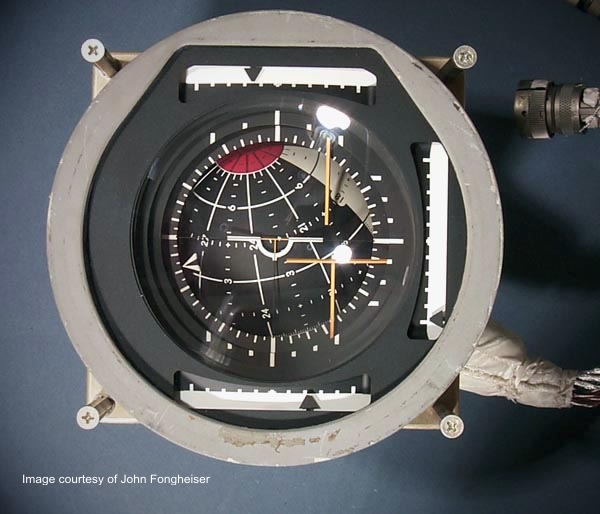
The two FDAIs provide displays to the crew the attitude in space, angular velocity (rate) and attitude error of the spacecraft.� Made by Honeywell, they display three major categories of information:
The attitude of the spacecraft in the pitch and yaw axes is indicated� by the position of the 8-Ball itself.� The attitude is measured with respect to a defined "inertial" reference.� The fixed central bar and its upside-down half-circle (termed an "inverted wing"), acts as the measuring point.
The pitch attitude is represented by the "great" semi-circles (ie the ones that are horizontal relative to the numbers on the ball).� The semicircle immediately under the "wing" is the current pitch angle.�The yaw attitude is represented by the "minor" circles (ie the ones that are vertical relative to the numbers on the ball).
The roll attitide is indicated by angle between the "wing" and the nearest pitch attitude circle.� It is also represented more accurately by the white triangular "bug" which points to the circular scale around the 8-Ball.
The top half of the 8-Ball is light-coloured, while the bottom half is black.� It is also marked with red areas at yaw angles between 270 and 285 degrees, and between 75 and 90 degrees.� These indicate impending gimbal lock, which can occur if 2 of the 3 gimbals of the inertial platform align together.
The rate of movement in the three axes is shown by the displacement of the black arrow on the scales at top, right and bottom of the FDAI. The top scale shows roll rate, the right-hand scale shows pitch rate and the bottom scale shows yaw rate.� The scales are marked in fifths, with the full-scale deflection value depending on the position of the FDAI-Scale switch. The angular rate displacements are "fly-to" indications - that is they show the direction the crew must move the controls to reduce the indicated rates of movement to zero.
The error in each axis, from the desired value, is indcated by the displacement of the yellow bars over the top, right and bottom of the 8-Ball. The roll scales is marked at 0, 1/2 and full-scale deflection, while the pitch and roll scales are marked at 1/3, 2/3 and full-scale deflection.� Again, the full-scale deflection value depends on the position of the FDAI-Scale switch.
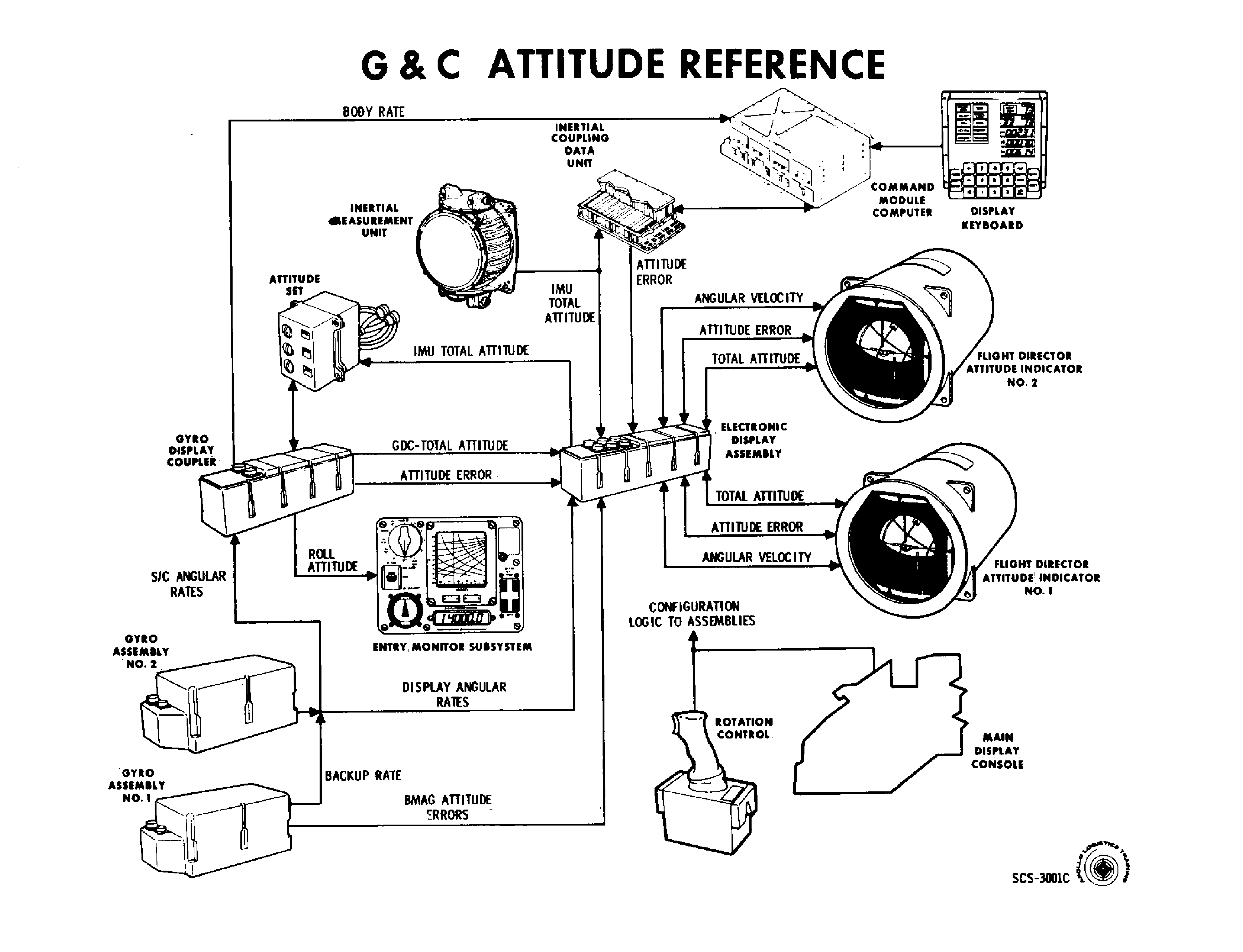
FDAI attitude and attitude error information is supplied from either of two gyro assemblies in the Attitude Reference Sub-System of the spacecraft Stabilisation and Control System (SCS), or from the the inertial platform in the Primary Guidance, Navigation and Control System (PGNCS).� Attitude rate signals are provided from the SCS gyros only.
All FDAI signals are processed through the Electronic Display Assembly.
The primary controls for the FDAIs are three switches on Panel 1. However, other controls affect the FDAI displays - especially those affecting the control of the gudance system.� The functions of the three main switches are:
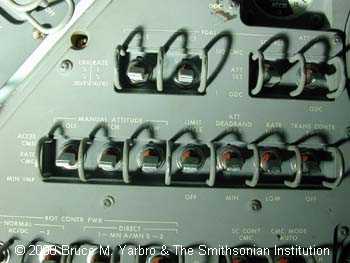
The FDAI-Scale switch can set the following full-scale deflection values:
Pitch rate +1 deg per sec, +5 deg per sec, +10 deg per sec
Yaw rate +1 deg per sec, +5 deg per sec, +10 deg per sec
Roll rate +1 deg per sec, +5 deg per sec, +50 deg per sec
The FDAI-Source switch controls whether the FDAI displays attitude inertial information from the Command Module Computer and the PGNCS or attitude information from the SCS's Gyro Display Coupler.
The FDAI is typical of the instruments used in both aviation and spaceflight during the 1960s.� An electro-mechanical� device,� it uses analogue electrical signals to drive mechanical pointers and the main "ball" display.� A rigid metal frame endures that the mechanism remains undistorted during launch and protects it against shock.� The many moving parts are highly susceptible to dirt and other loose objects that can jam them, especially in weightless conditions, and the whole instrument is sealed.� Assembled in clean-rooms and highly tested, instruments such as this are highly reliable, but at an equally high cost.
Last update: 2017-02-17
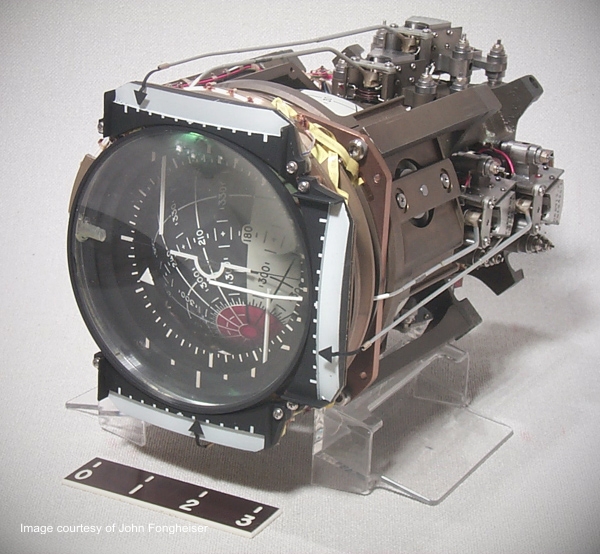
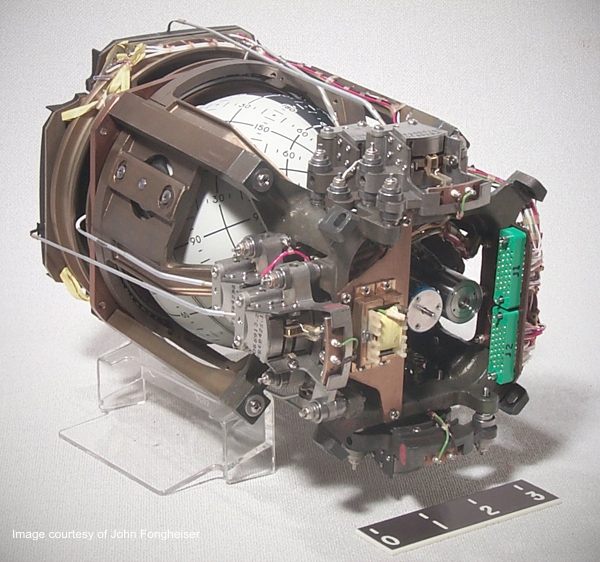
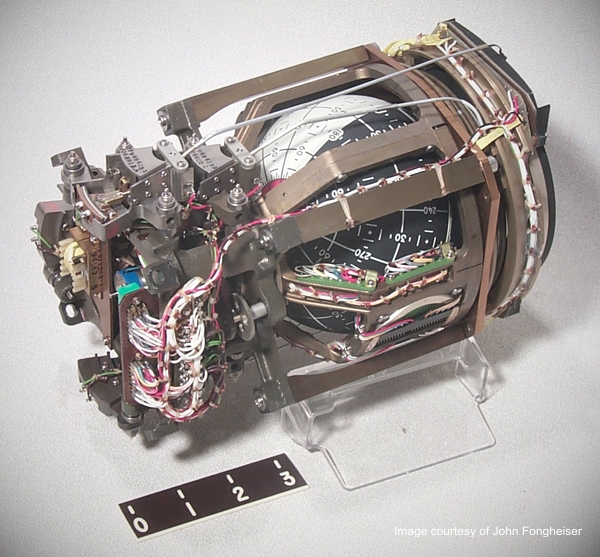 .
.
